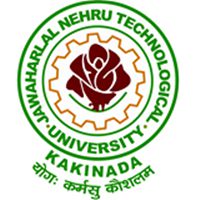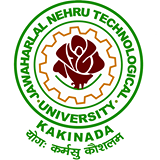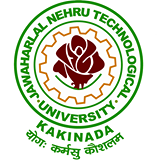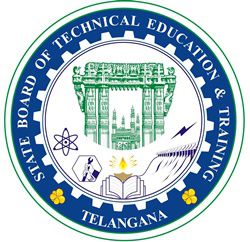TS SBTET Diploma C21 1st, 2nd Sem Syllabus PDF Download For All Branches
TS SBTET Diploma C21 1st, 2nd Sem Syllabus PDF Download For All Branches
The State Board of Technical Education and Training, Telangana under the aegis of the Department of Technical Education, Telangana regularly reviews the Curricula in tune with the developments both in academic and industry side. However, recognizing the changing needs as stated by the catchment industries, the Board has decided to bring about the revision of curriculum. Thus, the Board, with the assistance of senior faculty of the branches concerned, has reviewed C-18 Curriculum in force. On finding the merits and reviewing the existing C-18 Curriculum, the faculty has made a thorough assessment of the curricular changes that have to be brought in. It was felt that there is an urgent need to improve hands-on experience among the students pursuing diploma courses. Further, the urgency of enhancing communication skills in English has also been highlighted in the feedback and suggestions made by the user industries. Keeping these in view, a number of meetings and deliberations were held at State level, with experts from industry, academia and senior faculty of the department. The new Curricula for the different diploma courses have been designed with the active participation of the members of the faculty teaching in the Polytechnics of Telangana, besides reviewed by Expert Committee constituted with eminent academicians
The new C-21 curriculum is designed, duly taking into consideration the Outcome Based Education model as per NBA norms and Choice Based Credit System has also been introduced. In designing of new Curriculum more importance has been given to Skill Upgradation by allotting 2.5 Credit Points in each semester so as to improve the inbuilt skills of the students duly taking into consideration of New Telangana State Industrial Policy.
The primary objective of the curriculum revision is to produce best technicians in the country by correlating growing needs of the industries with the academic inputs. The revised New Curriculum i.e., Curriculum – 2021 or C-21 is planned and designed by making 6 months industrial training mandatory.
TS SBTET C21 Curriculum Preamble
Download TS SBTET C21 1st Sem Syllabus PDF’s
Diploma in Architectural Assistantship
Diploma in Artificial intelligence and machine learning
Diploma in 3D Animation and Graphics
Diploma in Automobile Engineering (DAE)
Diploma In Biomedical Engineering
Diploma In Cloud Computing and Big Data
Diploma In Commercial And Computer Practice (DCCP)
Diploma in Civil Engineering (DCE)
Diploma In Chemical Enggineering (DCHE)
Diploma in Cyber Physical systems ans Security
Diploma in Computer Engineering (DCME)
Diploma in Electronics Communication Engineering (DECE)
Diploma in Electrical & Electronics Engineering (DEEE)
Diploma in Electronics and Instrumentation Engineering (DEIE)
Diploma in Embedded Systems Engineering
Diploma in Electronics and Video Engineering
DIPLOMA IN HOME SCIENCE (DHS)
Diploma In Leather and Fashion Technology(DLT)
Diploma In Leather Goods and foot wear Technology
Diploma in Logistics Technology
Diploma in Mechanical Engineering (DME)
Diploma in Metallurgical Engineering (DMET)
Diploma In Mining Engineering (DMNG)
Diploma in Packaging Technology (DPKG)
Diploma In Printing Technology (DPT)
Diploma in Textile Technology (DTT)
Download TS SBTET C21 2nd Sem Syllabus PDF’s
Diploma in Architectural Assistantship
Diploma in Artificial intelligence and machine learning
Diploma in 3D Animation and Graphics
Diploma in Automobile Engineering (DAE)
Diploma In Biomedical Engineering
Diploma In Cloud Computing and Big Data
Diploma In Commercial And Computer Practice (DCCP)
Diploma in Civil Engineering (DCE)
Diploma In Chemical Enggineering (DCHE)
Diploma in Cyber Physical systems ans Security
Diploma in Computer Engineering (DCME)
Diploma in Electronics Communication Engineering (DECE)
Diploma in Electrical & Electronics Engineering (DEEE)
Diploma in Electronics and Instrumentation Engineering (DEIE)
Diploma in Embedded Systems Engineering
Diploma in Electronics and Video Engineering
DIPLOMA IN HOME SCIENCE (DHS)
Diploma In Leather and Fashion Technology(DLT)
Diploma In Leather Goods and foot wear Technology
Diploma in Logistics Technology
Diploma in Mechanical Engineering (DME)
Diploma in Metallurgical Engineering (DMET)
Diploma In Mining Engineering (DMNG)
Diploma in Packaging Technology (DPKG)
Diploma In Printing Technology (DPT)
Diploma in Textile Technology (DTT)
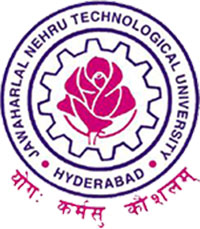

320-x100(1).gif)

